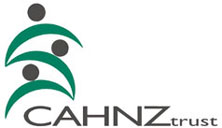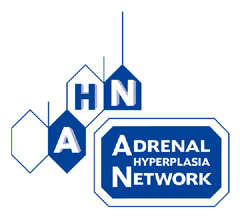Dr Jan Fairchild - Paediatric EndocrinologistWomen’s and Children’s Hospital
What is CAH? An overgrowth of the adrenal glands present at birth. At present in Australia, CAH occurs in 1/15,000 births. The outer zone of the adrenal glands are affected involving the production of
- cortisols (stress hormone)
- aldosterone (control of salt/water)
- androgens (much higher than normal in both boys and girls)
Classic salt-losing CAH (no enzyme activity) - 80% of classically affected. Classic simple virilising CAH – 20% of classically affected.Non classic/late onset – signs don’t appear until later
Presentation of Classic CAH At birth – masculinisation often occurs in girls, whereas genitalia is normal for boys. Often a salt-wasting crisis occurs in the first few weeks of life for boys or undiagnosed girls.
Goals of CAH Management Early and accurate diagnosis to prevent deaths. Optimal medical management throughout life. Surgical intervention may or may not be indicated. Genetic counselling. Psychological support and education
Medical TreatmentReplace hormones which cannot be produced
- cortisol - hydrocortisone
- aldosterone – Florinef (higher doses in infancy required)
Monitoring of Treatment (as important as the treatment itself)Monitoring growth throughout childhood. Weight gain.Physical examination, blood pressure, signs of puberty, signs of excess cortisols, bone age, skeletal maturity, biomedical monitoring . Checking the bone age of a child every 12 months can monitor an appropriate bone age in conjunction with treatment – generally bone age should be within 1 year either side of the child’s actual age. Effects of over treatment or under treatment discussed.Blood testing – finger prick method vs. blood sample – blotting paper testing shows cortisol levels. Completed over a 24 hour period which can prove to be more accurate than traditional blood tests. Monitoring of cortisol treatment – effects of not enough or too much. Monitoring of Florinef replacement – effects of too much or not enough
Preventing an Adrenal Crisis What is stress?
§ Moderate to severe physical stress/illness
§ Surgery
§ TraumaWhat is not stress?
§ Mild illness
§ Emotional stress
§ Exercise
Stress DosesThree times the normal doses, three times a day. Give sugar every two hours. Treat the underlying illness. Child vomiting requires -
§ Urgent intramuscular injection of hydrocortisone required (importance of MedicAlert ID)
§ See doctor or hospital staff – need to be in hospital
§ Contact your endocrinologist
Surgical Management
§ Decision to be made by parents together with the medical team after all information and options have been discussed
§ Surgery requires a high degree of expertise and experience
§ Type of surgery required
§ Timing of surgery – most centres now advocate early surgery for psychological and technical reasons – however, this is not universal
Psychological Support Access to appropriate counselling and information from clinical team –
§ Immediately after birth
§ Prior to surgery
§ At adolescenceValue of support groups – local CAHSGA or online
Goals of Adolescents with CAH
§ Healthy self-esteem
§ Healthy sexual development – free and honest communication
§ Parents should be optimistic and confident, understand normal adolescent behaviour of risk-taking
§ Difficulties keeping to a routine, wanting more and more independence
§ Important for girls to have private discussions with adolescent gynaecologist
Recent Research in CAH
§ Patients complain of reduced endurance during exercise. Research indicates that CAH patients cannot produce as much adrenaline as others, also blood sugar levels don’t rise as much.
§ Tests indicated that extra hydrocortisone had no effect on short-term high-intensity exercise.
§ Final adult height can be a little shorter even with the best medical care
§ Growth hormone can be helpful but there are risks.
Despite advances, there remain problems – experimental treatment to block pituitary hormone, anti-androgen drugs are currently being tested (some risks/long-term effects may be involved)
Dr Janice Fletcher – GeneticistWomen’s and Children’s Hospital
Background Genetics on CAHTerminology explainedGenetics and inheritance – mutations & carrier testingTreatment and testing in pregnancyCAH – Family of inherited enzyme defects in the steroid pathway90% due to deficiency of the enzyme 21 hydroxylaseAbnormal steroid hormone production in the adrenal glandHuman GenomeGenes are the instructions to make enzymes and structural genesHumans have 30,000 pairs of genes
- One of each pair comes from each parent
- Humans are ‘over-designed’ and a single normal back up copy is enough for most enzyme functions
Genetic Glossary
- Mutation – a (disease-causing) change in a gene
- Allele – one of a gene pair
- Phenotype – appearance (physical or biochemical)
- Genotype – genetic structure
- Homozygote – both gene copies the same (can be mutant or normal)
- Heterozygote – gene copies different (usually one normal, one mutant)
- Compound heterozygote – affected person with 2 different mutations
- Exons – the coding segments of DNA that are spliced together to make the mature protein
- Introns – the ‘non-coding’ DNA segments that are removed in translation
- Cis – where 2 (or more) mutations are on the same allele
- Trans – where 2 mutations are on opposite alleles
- De Novo – where one parent carries and the other mutation is a new mutation
- Classic 21-OHD – The genotype is predicted to be a severe mutation on both CYP21A2 alleles.
- Salt wasting is generally associated with completely abolished enzymatic activity.
- Non-classic 21-OHD – Individuals with non-classic CAH are predicted to have mild mutations on both alleles or one severe and one mild mutation (compound heterozygote).
- Approximately 2/3 of individuals with non-classic 21-OHD are compound heterozygotes.
DNA testing for 21-hydroxylase deficiency in Australia
- Ivan McGown – Mater Hospital – Brisbane, QLD
- Dr Xuguang Han – Prince of Wales Hospital – Randwick, NSW
Mutation detection rate 80-95%Interpretation of results can be complexCarrier TestingCan be offered if the mutation(s) is known in the affected personParents usually healthy carriers – new mutation rate around 1%Siblings of affected person are at 67% risk of being carriersAunts and Uncles are at 50% risk of being carriers
Untested partners are at 1 in 60 risk of being carriers
Dr Elinor Atkinson - Gynaecologist/ObstetricianFlinder’s Medical Centre
What does a paediatric gynaecologist do?
- Looks after girls and young women
- Takes time to talk about special issues
What some people worry about?
- Is my body different?
- Is CAH a secret?
- Will I need surgery?
- Will I be able to have a partner?
- What do I tell my partner?
- Will I be able to have children?
Long-Term Medical Care:
- Impact of chronic medical condition on self-esteem, privacy, etc
- Impact on independence
- Impact of repeat genital examinations
Disclosure and Open Discussion:
- Disclosure issues within the family and friends
- Being ‘different’ – peer acceptance
- Body image – concern about genital appearance
- Relationship and partners
Fertility:
- 30% experience irregular periods (compared with 10% generally) – some don’t have periods at all
- Almost all women with CAH have polycystic ovarian syndrome
- One in three non-salt-losers will become pregnant
- One in ten salt-losers will become pregnant
- Generally no pregnancy problems with CAH mothers but usually have Caesarian sections
- Treatment may suppress androgens but not always able to suppress progesterone enough for fertility.
Associate Professor David Torpy - Adult EndocrinologistRoyal Adelaide Hospital
What is CAH? A congenital condition – adrenal glands affectedwhich produce cortisone, aldosterone, DHEAThe cause is a mutation which leads to reduced
function of the adrenal cortexClassical CAH (salt-wasting) – 1/15,000Non salt-wasting – early puberty.
Approaches to Treatment Replace cortisol with glucocorticoid – relieves deficiency symptoms, lowers ACTH, reducing androgensReplace aldosterone with Florinef if necessary
Need for Balance Not enough cortisol = too much androgenGive androgen-blocking drugs Give androgen and oestrogen synthesis inhibitor drugs to reduce bone over-maturationRemoval adrenal glands (adrenalectomy) for better overall control thus reducing dose of glucocorticoids.
Florinef dose may remain the same. Future gene therapy.Mild adult cases – may not need treatment unless symptoms are severeTo avoid prenatal virilisation, give prenatal dexamethasone – remains controversialAdrenal rests are often referred to in the context of appearing in male testes, however women are often found to have adrenal rests on their ovaries but this doesn’t appear to affect fertility as in males.
Case 1 28 year old woman, single, irregular periods, excessive hair growth, elevated DHEA, testosterone, positive 17-ohp response, very mild mutationTreatment was symptomatic only. Suppression of adrenal function – consider risks vs. benefitsFamily history, genetic studies
Case 2 37 year old woman born with salt-losing CAH and virilisation.Lifetime medication of glucocorticoids and FlorinefSurgical revision of masculinised genitaliaAs an adult – dark skin, hoarse voice, cushingoid – could possibly have been avoided with adrenalectomy.
Case 3 32 year old truck driverPresented with very painful testes – had difficulty workingDiagnosed with salt-losing CAH at birth – had an older brother who died at six days oldProblem with growth of adrenal rest tissue (10 cm in length) in testes due to high ACTH – not taking medication regularlyOptions – remove testes or treat with glucocorticoidsTreatment with glucocorticoids was successful.
ConclusionCAH in adulthood requires ongoing surveillanceExcessive treatment and Cushing’s Syndrome are a major problemTreatment must be carefully individualised due to the impact this disorder has on individuals.
New TreatmentsSuppress ACTH and androgens (too early in the day to assess)
Treat within the circadian rhythm of the individual.



